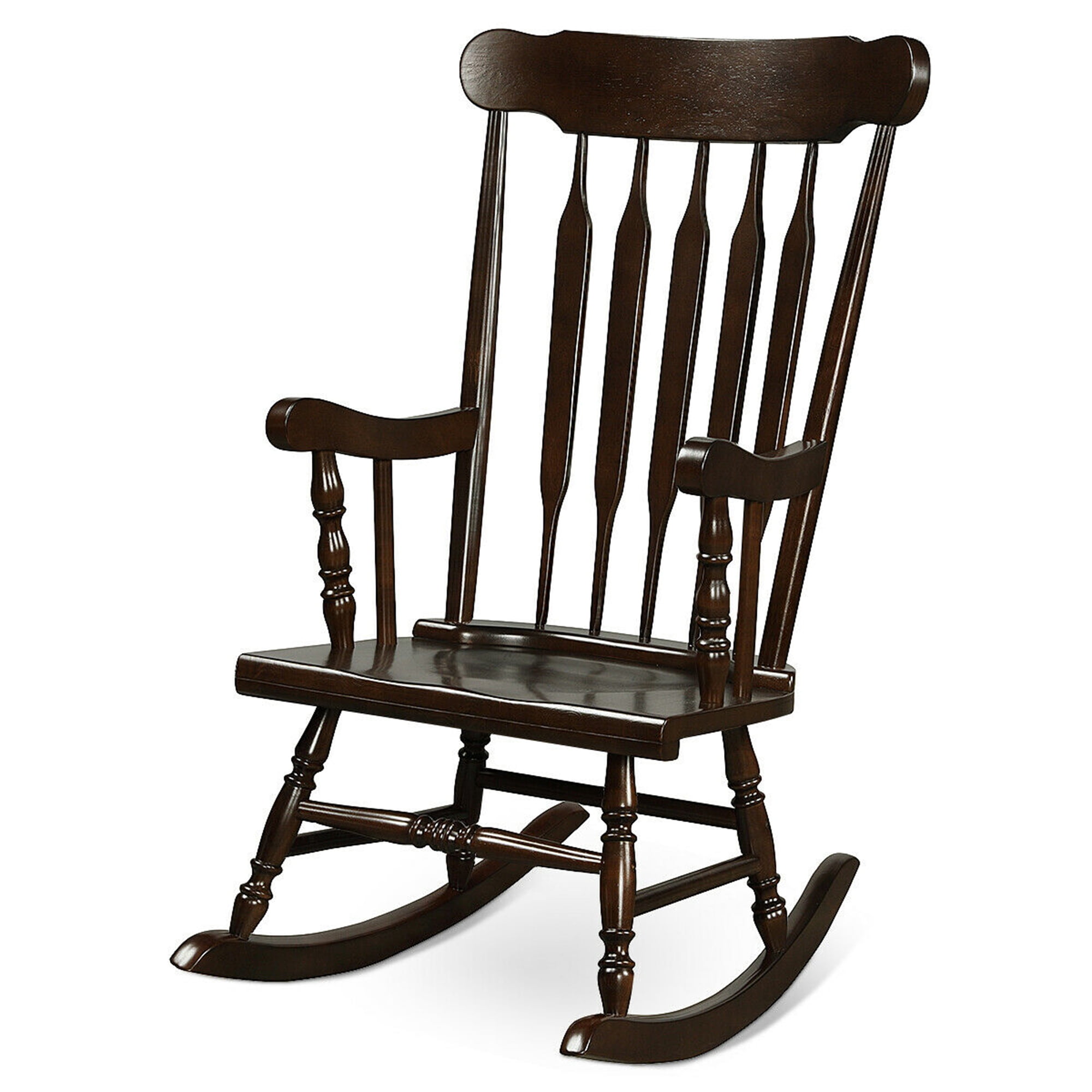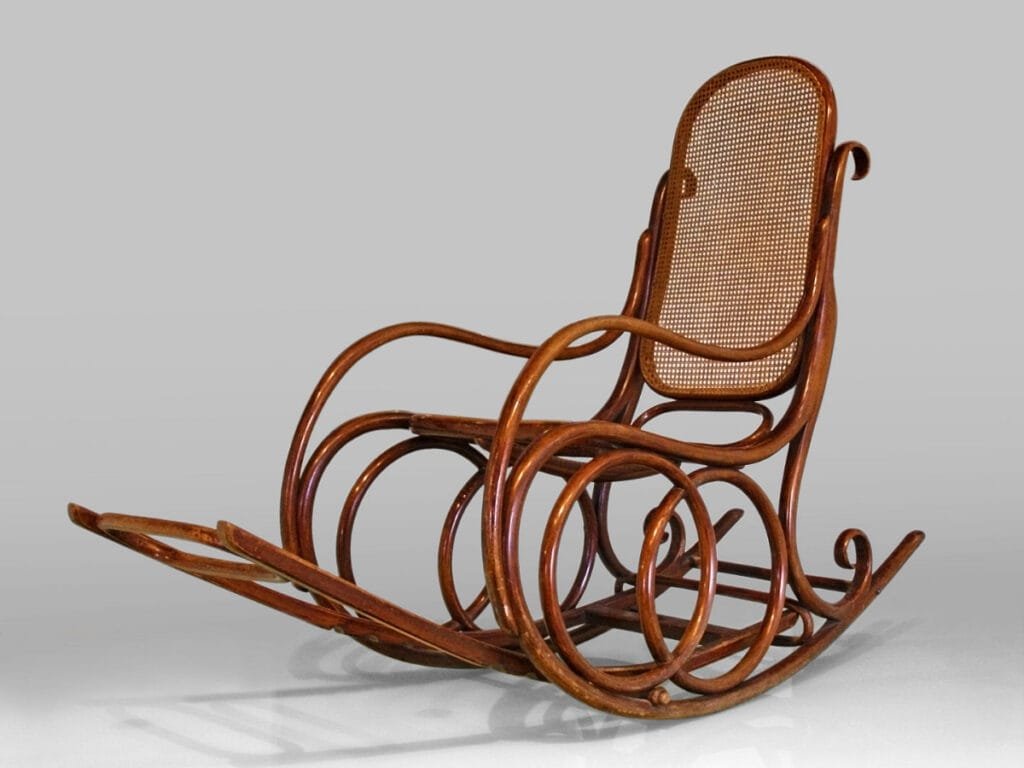The Psychology of Rocking Back and Forth

Rocking back and forth in a chair is a common behavior that can be observed in people of all ages. While it might seem like a simple act, there’s a lot more to it than meets the eye. The act of rocking can be influenced by a variety of psychological factors, and it can have both positive and negative implications.
The Psychological States Associated with Rocking
The act of rocking back and forth can be associated with different psychological states. Some of the most common include:
- Relaxation and Stress Reduction: Rocking can be a calming and soothing activity, especially when done rhythmically. The gentle back-and-forth motion can help to reduce tension and promote relaxation. It’s similar to how swinging on a swing can be calming, but for adults, a chair serves as a more appropriate tool. This is why rocking chairs are often associated with comfort and tranquility.
- Boredom and Restlessness: When people are bored or restless, they may start rocking to provide a sense of stimulation. The movement can help to alleviate the feeling of being stuck or trapped, especially in situations where there’s limited physical activity.
- Anxiety and Nervousness: In some cases, rocking can be a coping mechanism for anxiety or nervousness. It can be a way to release pent-up energy and channel anxious feelings into a repetitive motion. This is especially true for individuals with conditions like autism or ADHD, who may find repetitive motions calming and comforting.
- Comfort and Security: Rocking can evoke feelings of comfort and security, particularly for people who experienced it during childhood. Think about babies being rocked to sleep in their cribs. This association can persist into adulthood, making rocking a comforting habit in times of stress or uncertainty.
Rocking in Different Contexts: Rocking Back And Forth In Chair

Rocking back and forth is a behavior that transcends cultures and time, manifesting in diverse contexts, often imbued with symbolic meaning. It’s not just a random movement; it’s a reflection of our inner states and the social norms we navigate.
Rocking in Literature, Film, and Art
The act of rocking has been a recurring motif in literature, film, and art, often symbolizing various emotions and states of mind.
“The rocking chair is the most important piece of furniture in the house,” wrote American novelist, William Faulkner.
Examples abound:
- Literature: In Edgar Allan Poe’s “The Tell-Tale Heart,” the narrator’s frantic rocking back and forth reveals his guilt and paranoia. In “The Rocking-Horse Winner,” D.H. Lawrence explores the dark side of obsession and the destructive power of rocking as a coping mechanism.
- Film: The rocking chair in Alfred Hitchcock’s “Psycho” is a symbol of Norman Bates’ disturbed mental state, its rhythmic movement mirroring his inner turmoil. In the film “The Exorcist,” the possessed child’s rocking back and forth is a chilling manifestation of demonic forces.
- Art: In Edvard Munch’s famous painting “The Scream,” the figure’s contorted posture and rocking motion embody the artist’s existential angst. In many cultures, rocking is depicted in sculptures and paintings as a symbol of comfort, meditation, or even a form of spiritual connection.
Cultural Significance of Rocking
Rocking holds diverse cultural significance, varying across societies and time periods.
- Traditional Societies: In many indigenous cultures, rocking is a ritualistic practice associated with healing, prayer, and spiritual connection. For example, among the Native American tribes of the Great Plains, rocking was a crucial part of their ceremonies and dances.
- Western Cultures: In Western societies, rocking is often associated with childhood, comfort, and relaxation. The rocking chair is a symbol of domesticity and nostalgia, evoking memories of childhood and family.
- Modern Contexts: In contemporary society, rocking is increasingly used as a form of self-soothing, stress reduction, and sensory stimulation. Rocking chairs and weighted blankets are popular tools for managing anxiety and promoting relaxation.
Contexts of Rocking, Rocking back and forth in chair
Rocking can be observed in various contexts, each with its unique meaning and significance.
| Context | Description | Significance |
|---|---|---|
| Childhood | Babies and toddlers naturally rock back and forth, often as a way to self-soothe or explore their environment. | Rocking is a fundamental part of infant development, promoting physical coordination and sensory exploration. |
| Meditation | Rocking is sometimes used as a form of meditation, helping to calm the mind and induce a state of relaxation. | Rocking can promote mindfulness and a sense of inner peace. |
| Self-Soothing | Adults may rock back and forth as a way to self-soothe when experiencing stress, anxiety, or emotional distress. | Rocking can provide a sense of comfort and security, helping to regulate emotions. |
| Spiritual Practices | In some cultures, rocking is a part of spiritual practices, used to connect with higher powers or enter altered states of consciousness. | Rocking can facilitate a sense of transcendence and spiritual connection. |
The Physical Impact of Rocking

Rocking back and forth is an intuitive movement that we engage in from a young age. This seemingly simple act can have a surprisingly profound impact on our physical well-being. Beyond the calming effect, rocking can provide a range of benefits, from improving balance and circulation to potentially aiding in muscle recovery. However, like any physical activity, excessive rocking can also come with its own set of risks.
Potential Physical Benefits of Rocking
Rocking can contribute to several physical benefits.
- Improved Balance: The constant shifting of weight and adjusting of posture while rocking can enhance our balance and coordination, particularly for older adults who may experience age-related balance issues.
- Enhanced Circulation: The rhythmic motion of rocking can stimulate blood flow throughout the body, potentially reducing the risk of blood clots and improving circulation to the extremities.
- Muscle Relaxation and Pain Relief: Gentle rocking can help relax tense muscles, particularly in the back and shoulders. The rhythmic motion can also act as a form of massage, easing muscle soreness and stiffness.
- Improved Sleep Quality: Rocking can promote relaxation and reduce anxiety, which can contribute to a more restful sleep.
Potential Risks Associated with Excessive Rocking
While rocking can offer several benefits, it’s crucial to be mindful of potential risks associated with excessive rocking.
- Muscle Strain: Prolonged or vigorous rocking can strain muscles, particularly in the neck, back, and shoulders.
- Dizziness: Excessive rocking can cause dizziness and disorientation, especially in individuals prone to motion sickness.
- Joint Pain: Rocking can exacerbate existing joint pain, particularly in individuals with conditions like arthritis.
Rocking Exercise Routine
Here’s a short exercise routine incorporating rocking movements:
- Warm-up: Begin with a few minutes of light stretching to prepare your muscles.
- Rocking Back and Forth: Sit on a stable chair with your feet flat on the floor. Gently rock back and forth, engaging your core muscles and maintaining good posture. Continue for 5-10 minutes.
- Side-to-Side Rocking: Shift your weight from side to side, engaging your hip muscles and maintaining a controlled movement. Continue for 5-10 minutes.
- Circular Rocking: Gently rock in a circular motion, engaging your core and hip muscles. Continue for 5-10 minutes.
- Cool-down: Finish with a few minutes of gentle stretching to relax your muscles.
Rocking back and forth in chair – The gentle rhythm of rocking back and forth in a chair can be incredibly soothing, providing a sense of comfort and calm. For children, this experience is amplified with a kids Eames rocking chair , which offers a miniature version of this classic design, allowing them to enjoy the same soothing motion in a safe and age-appropriate way.
This simple act of rocking can become a cherished ritual, fostering a sense of security and tranquility for young minds.
The gentle motion of rocking back and forth in a chair can be incredibly soothing and relaxing. For those seeking a personalized experience, a personalized rocking chair for adults offers a unique blend of comfort and style. Whether you prefer a classic design or a modern aesthetic, a personalized rocking chair can be tailored to your individual preferences, making the simple act of rocking back and forth even more enjoyable.
